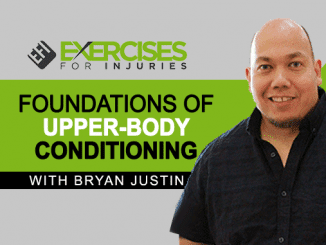
Today’s topic is Functional Movement Pattern Assessments & Corrective Exercise Training. Functional movement pattern assessments evaluate a person’s ability to move efficiently and effectively. Available movement patterns facilitate standard movement patterns, such as sitting and standing, and movements that enable tasks, such as reaching or climbing stairs.
A functional movement pattern assessment typically involves the participant moving through tasks while a motion capture system measures the movements. A functional movement pattern assessment can help identify areas where a person may need additional skill development. Physical therapists, occupational therapists, and other health care professionals can conduct functional movement pattern assessments. Functional movement pattern assessments can provide valuable information about a person’s movement abilities and how well they fit into normal daily activities.
What is Corrective Exercise Training?
Corrective exercise training is gradually increasing the amount of physical activity to improve health. This exercise helps people with various conditions, including low back pain, arthritis, and obesity. The first step for many people with lower back pain is to start walking as often as possible. Tools like a sitting Walker allow you to sit in an ergonomic chair while engaging in tiny movements that simulate walking for those who can’t stand or walk for long periods.
In addition to walking, light weightlifting can also help strengthen weakened muscles and restore mobility. In addition to the apparent muscle benefits, strength training can also help improve posture by improving how your body sits when you are standing.
Another option is to use an elliptical machine or exercise bike while sitting on a seat that supports your back and hips. These machines provide resistance with each stroke and help strengthen your core muscles. Finally, stretching is essential to maintain overall flexibility and reduce the risk of injuries. Stretching before, during, and after workouts can help reduce lower back tightness and increase range of motion.
Corrective exercise training is based on the idea that exercise can help people recover from injury or illness and improve their overall health. But it’s not just about getting active, but it’s about doing the right kind of exercise at the right time and doing it correctly. There are two main types of corrective exercise training: regular workouts and targeted exercises. Typical activities include walking, running, swimming, and strength training (using weights or machines). Targeted exercises focus on one area, like strengthening your core or improving your balance. So how does it work? If you have an injury or condition that affects your muscles, when you start exercising, you’re likely to feel some pain in those areas as your muscles try to heal.
A targeted exercise program can help by working those muscles differently than usual. For example, a weight-bearing exercise like walking might work your legs as you walk and support your body weight, while a balanced workout might work your whole body to keep you balanced and prevent falling. This can result in tightness and stiffness in those muscles, making them harder to move and even creating pain when used.
I am hosting a fantastic presenter.
It is Tara Keller.
Tara is a practicing Kinesiologist in Vancouver, BC, Canada, that focuses on working with clients with injuries and movement dysfunction.
In the interview, she talks about the two courses that I am hosting:
Functional Movement Pattern Assessments & Corrective Exercise Training with Tara Keller
In the interview, Tara Keller will share with you:
What the Introduction to Muscle Imbalance Testing & Functional Fitness Course Covers, including:
- Assessing movement patterns
- Regions of instability
What the Addressing Muscle Imbalance Through Exercise Course Covers, including:
- Strategies for re-establishing functional movement
- Corrective exercises cover instability regions through the ankles, knees, hip, trunk, pelvic area, shoulder, and neck.
==> CLICK HERE for the disciplinary exercise interview
To get more information on Tara Keller, visit her website by CLICKING HERE.
3 Assessment Mistakes Trainers Make
Thank you so much.
I hope you enjoyed the interview.
Feel free to email me and let me know what topic you would like to cover in upcoming interviews or what fitness professionals you would like me to interview.
Rick Kaselj, MS





